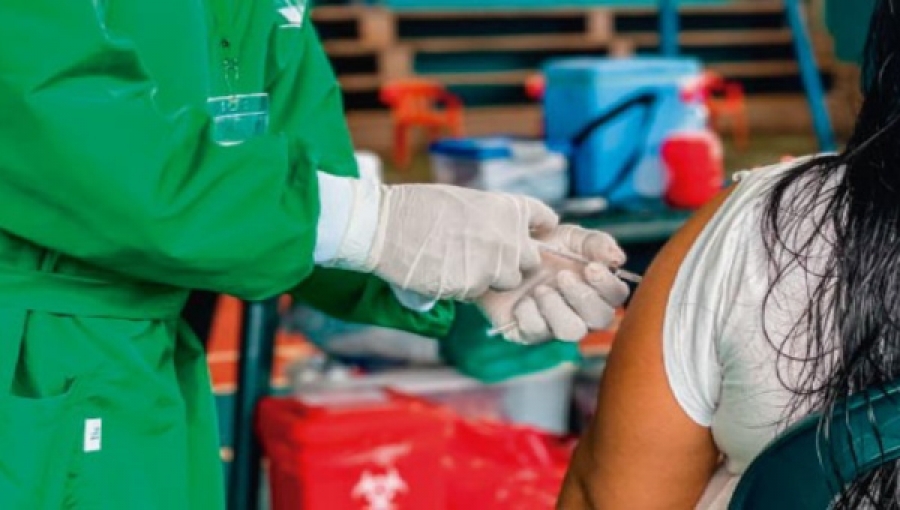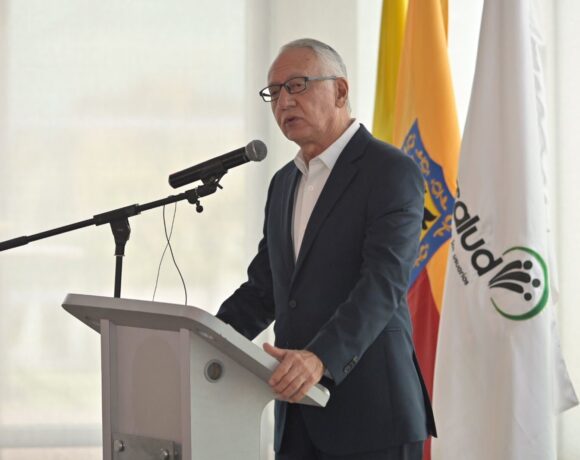Colombia Updates Covid-19 Vaccination Rollout Plan as Shot Rate Accelerates

Colombia’s Health Ministry announced May 8 a new, updated Covid-19 vaccination plan on the heels of accelerating vaccination rates – now topping 200,000 daily, likely meaning that more than 10 million Colombians will have had at least one shot by the end of May 2021.
The plan adjustments “were made based on scientific evidence, which made it possible to identify new comorbidities in people with higher risk from the virus and other populations that, due to their exposure, have an increased risk of infection,” stated Health Ministry infectious-disease prevention director Gerson Bermont.
While virtually all of Colombia’s front-line health workers have long since been vaccinated under “Stage 1” of the national plan, the “next-in-line” health workers in the now-underway “Stage 2” include “all the human health workers in the EPS [health-provider networks], control bodies and different organizations that assist, accompany and validate the entire process of care and management of Covid,” Bermont said.
As for the “Stage 3” vaccinations starting this month, people with certain comorbidities (see below) will be included along with people between 50 and 59 years old. “Before now, this group was in Stage Five and now will go to Stage Three as a priority by age, taking into account that age continues to be the highest risk factor,” according to Bermont.
“Stage 4” now includes people aged 40 to 49 and all public-relief groups. Meanwhile, “Stage 5” will including people aged 16 to 39 years without comorbidities.
Here are all the updated categories, according to the Health Ministry:
Stage 2: Population between 60 and 79 years of age.
“Includes all health professionals in compulsory social service; resident physicians and their teachers within the framework of the teaching-service agreements and internal physicians of all health service providers of any level of complexity who carry out their activities in any of the services provided by health service providers and who do not are classified in stage 1.
“Also includes human talent in health and support that attends patients in health service providers, traditional doctors, ancestral physicians, private health agents and health students in clinical practice.
“Also includes human talent that supports the response to the pandemic, the National Vaccination Plan, the Expanded Plan for Immunization and Inspection, Surveillance and Control, plus human talent in health that cares for patients or visits providers in spaces other than the IPS, as well as human talent that works in blood, organ and tissue banks.”
Stage 3: “Population between 50 and 59 years old, as well as population between 16 and 59 years old, presenting at least one of the following conditions: Hypertensive diseases; acute ischemic heart disease; heart failure; cardiac arrhythmias; cerebrovascular disease; diabetes; renal insufficiency; HIV; cancer; tuberculosis; chronic obstructive pulmonary disease; asthma; Obesity Grade 1, 2 and 3 (Body Mass Index> 30); those on the waiting list for transplantation of vital organs; post transplant of vital organs; neurological disorders; Down’s Syndrome; primary immunodeficiency; schizophrenia, schizotypal disorder, and delusional disorders; autism; bipolar disorder; intellectual disability and other mental disorders due to brain injury or dysfunction or somatic disease; cystic fibrosis.
“Also includes educational agents, community mothers and fathers linked to early childhood services, identified by [child-welfare agency] ICBF; teachers, educational directors, logistical and administrative support personnel of initial education, preschool, basic primary, basic secondary, secondary education and higher education establishments; caregivers of populations of special protection; public force; indigenous guard and maroon guard; human talent from funeral homes, crematoriums and cemeteries that handle corpses; Search Unit Personnel; Colombian Migration Personnel; highest national, municipal, district and departmental Police and Health authorites; personnel of the Office of the Attorney General of the Nation.
Stage 4: “People in prisons; personnel who, due to their functions, are in direct contact with prisoners; first responders in risk management; street dwellers; human talent that works in social services for the attention of the homeless population; active international flight attendants and pilots and crew of international cargo ships; high risk aeronautical personnel; human talent of the Family Protective Service Stations in charge of the care and protection of victims of domestic violence; UNGRD emergency and disaster field care human talent staff; and people aged 40 to 49 years.
Stage 5: “People aged 16 years and over not found in the populations indicated in stages 1, 2, 3 and 4. Priority in this group includes adults between 30 and 39 years of age, then young people and adolescents.”
















